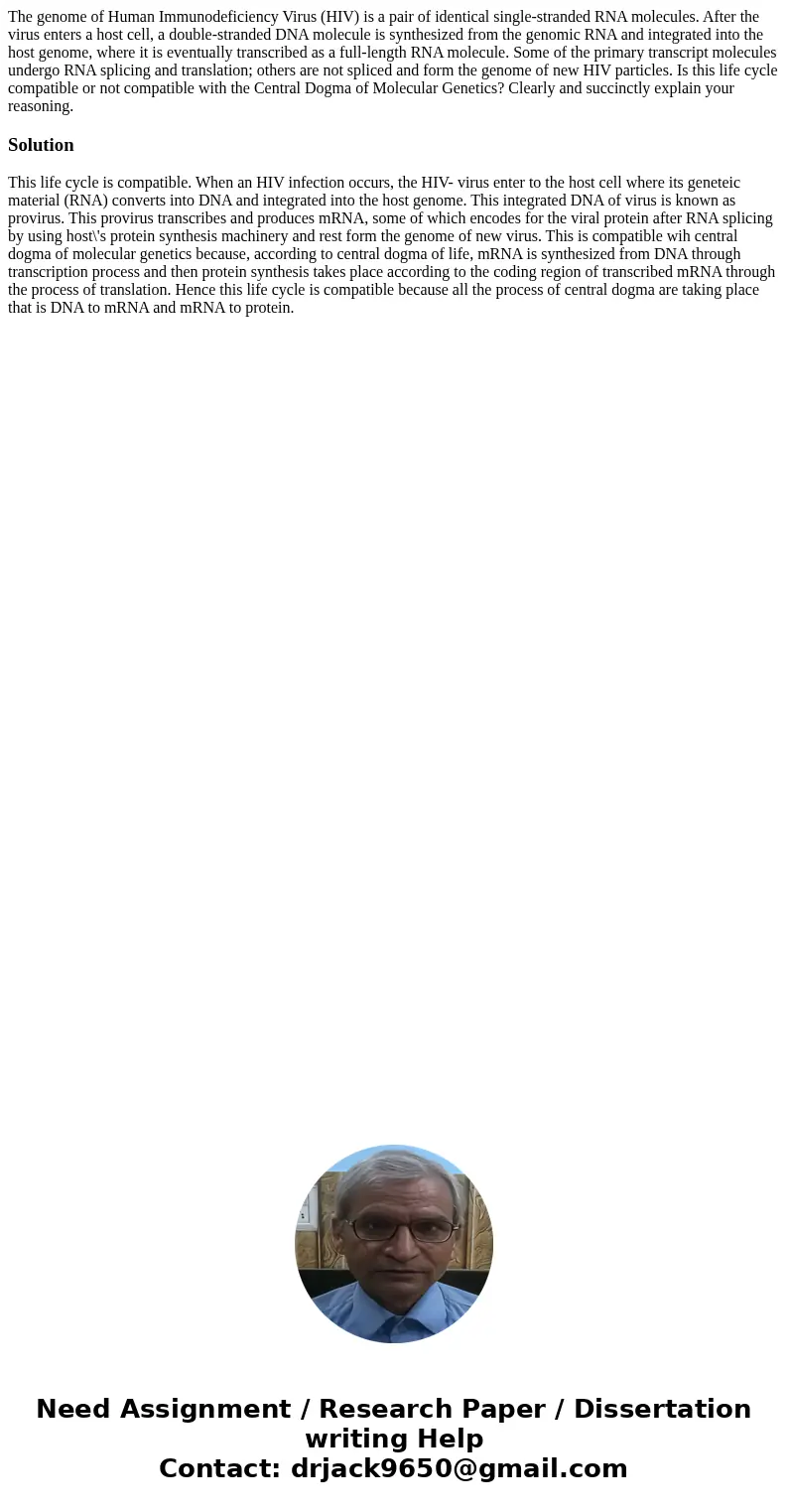The genome of Human Immunodeficiency Virus HIV is a pair of
The genome of Human Immunodeficiency Virus (HIV) is a pair of identical single-stranded RNA molecules. After the virus enters a host cell, a double-stranded DNA molecule is synthesized from the genomic RNA and integrated into the host genome, where it is eventually transcribed as a full-length RNA molecule. Some of the primary transcript molecules undergo RNA splicing and translation; others are not spliced and form the genome of new HIV particles. Is this life cycle compatible or not compatible with the Central Dogma of Molecular Genetics? Clearly and succinctly explain your reasoning.
Solution
This life cycle is compatible. When an HIV infection occurs, the HIV- virus enter to the host cell where its geneteic material (RNA) converts into DNA and integrated into the host genome. This integrated DNA of virus is known as provirus. This provirus transcribes and produces mRNA, some of which encodes for the viral protein after RNA splicing by using host\'s protein synthesis machinery and rest form the genome of new virus. This is compatible wih central dogma of molecular genetics because, according to central dogma of life, mRNA is synthesized from DNA through transcription process and then protein synthesis takes place according to the coding region of transcribed mRNA through the process of translation. Hence this life cycle is compatible because all the process of central dogma are taking place that is DNA to mRNA and mRNA to protein.

 Homework Sourse
Homework Sourse